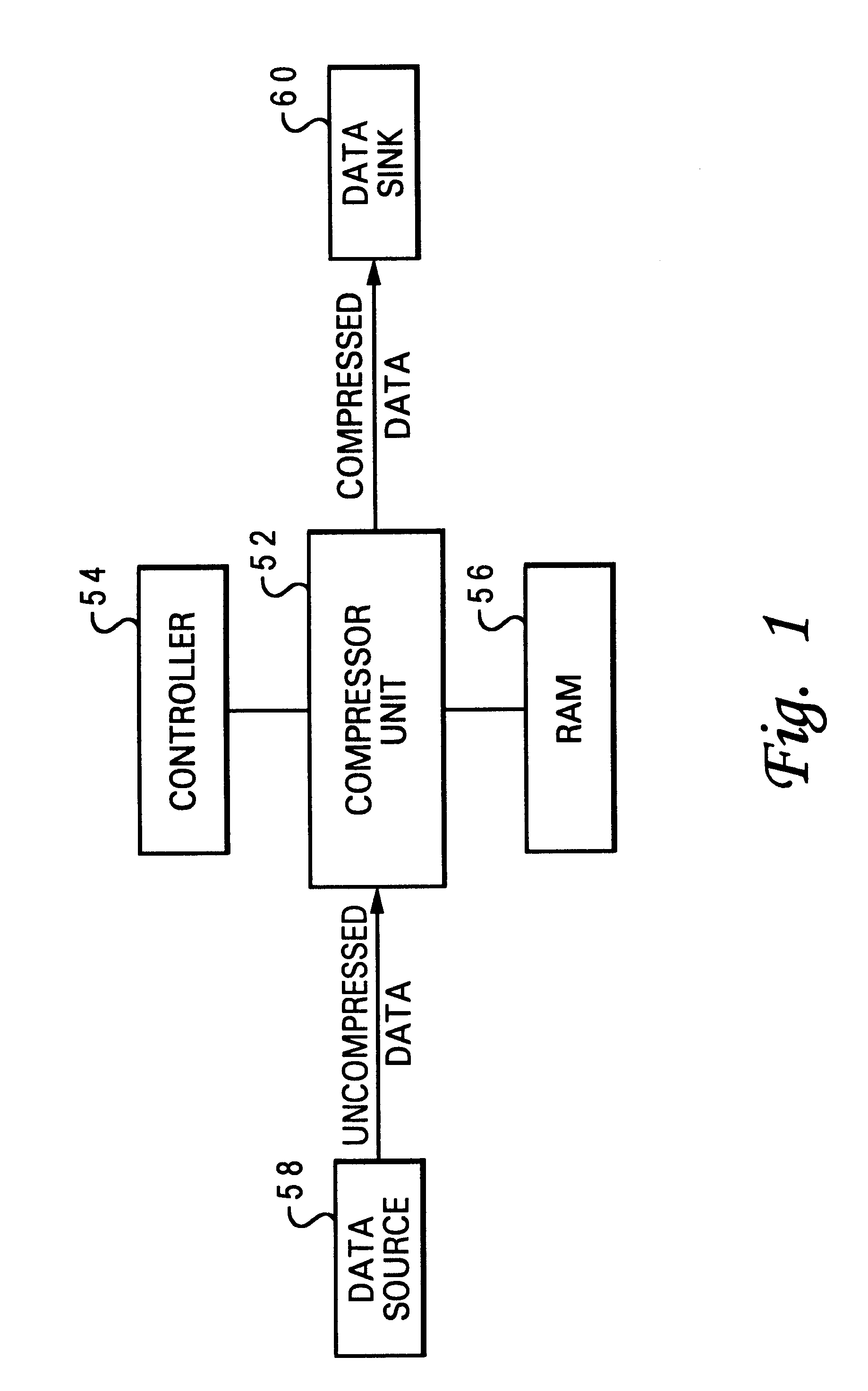Method and system for scope-based compression of register and literal encoding in a reduced instruction set computer (RISC)
a technology of scope-based compression and register, applied in the field of method and system for compressing executable code, can solve the problems of increasing program load time, reducing the effectiveness of instruction cache on modern processors and utilization of memory resources, and large size of executable code written in these instruction sets
- Summary
- Abstract
- Description
- Claims
- Application Information
AI Technical Summary
Benefits of technology
Problems solved by technology
Method used
Image
Examples
Embodiment Construction
Those skilled in the art appreciate that the invention described herein can be implemented in either hardware or software. With reference now to the figures and in particular with reference to FIG. 1, there is depicted a block diagram of a data compressor unit in which a preferred embodiment of the present invention may be incorporated. As shown, compressor unit 52 is coupled to a controller 54 and a random-access memory (RAM) 56. All data structures associated with the combination of the different compression algorithms are maintained within RAM 56. Controller 54 stores in non-volatile memory the specifications for the separate scopes to be used by the compressor unit 52. During operation, compressor unit 52 receives from a data source 58 an uncompressed executable program. After data encoding using the specifications for the separate scopes stored in controller 54 in accordance with the preferred embodiment of the present invention, a compressed executable program is then transmit...
PUM
 Login to View More
Login to View More Abstract
Description
Claims
Application Information
 Login to View More
Login to View More - R&D
- Intellectual Property
- Life Sciences
- Materials
- Tech Scout
- Unparalleled Data Quality
- Higher Quality Content
- 60% Fewer Hallucinations
Browse by: Latest US Patents, China's latest patents, Technical Efficacy Thesaurus, Application Domain, Technology Topic, Popular Technical Reports.
© 2025 PatSnap. All rights reserved.Legal|Privacy policy|Modern Slavery Act Transparency Statement|Sitemap|About US| Contact US: help@patsnap.com



